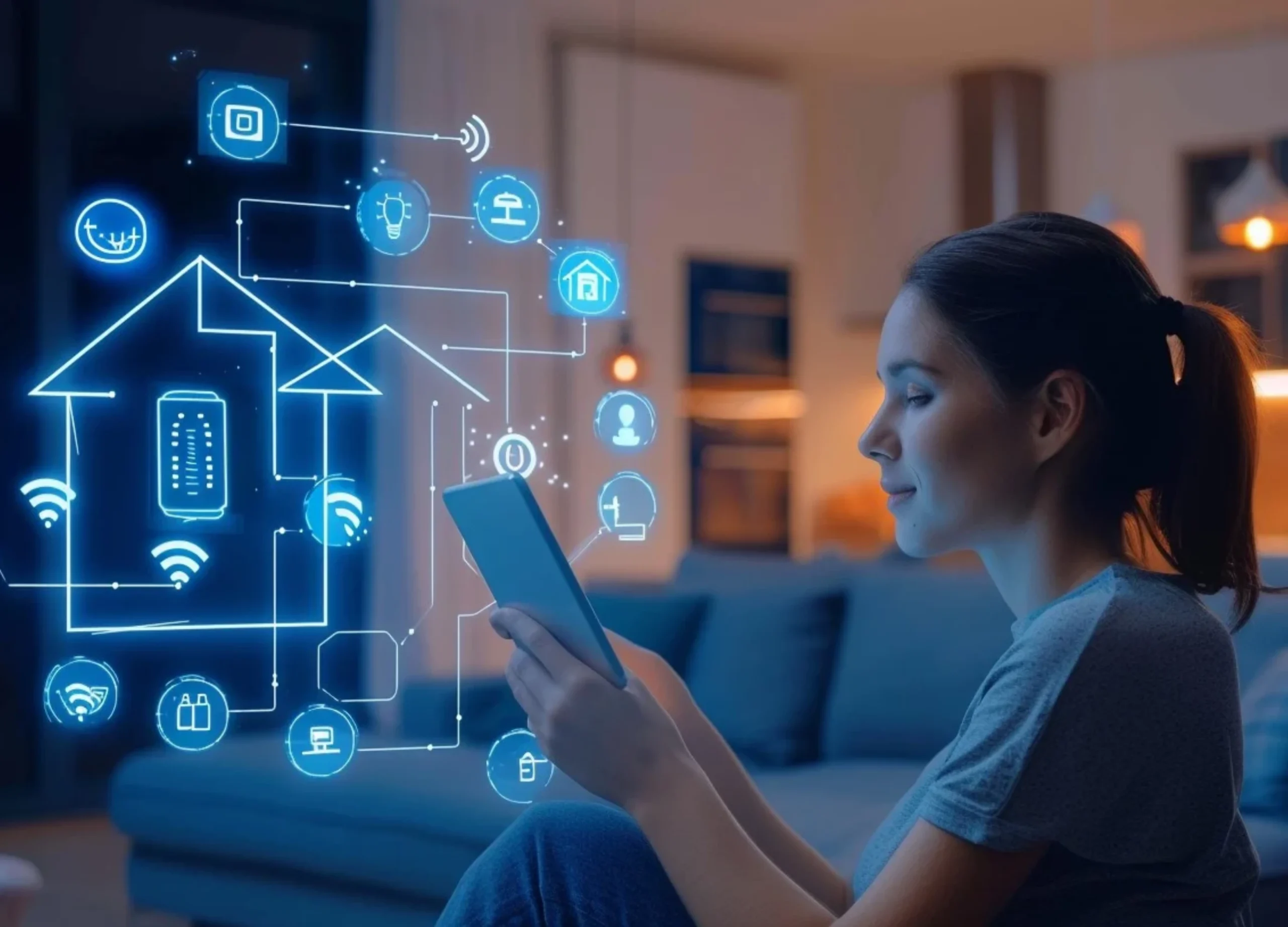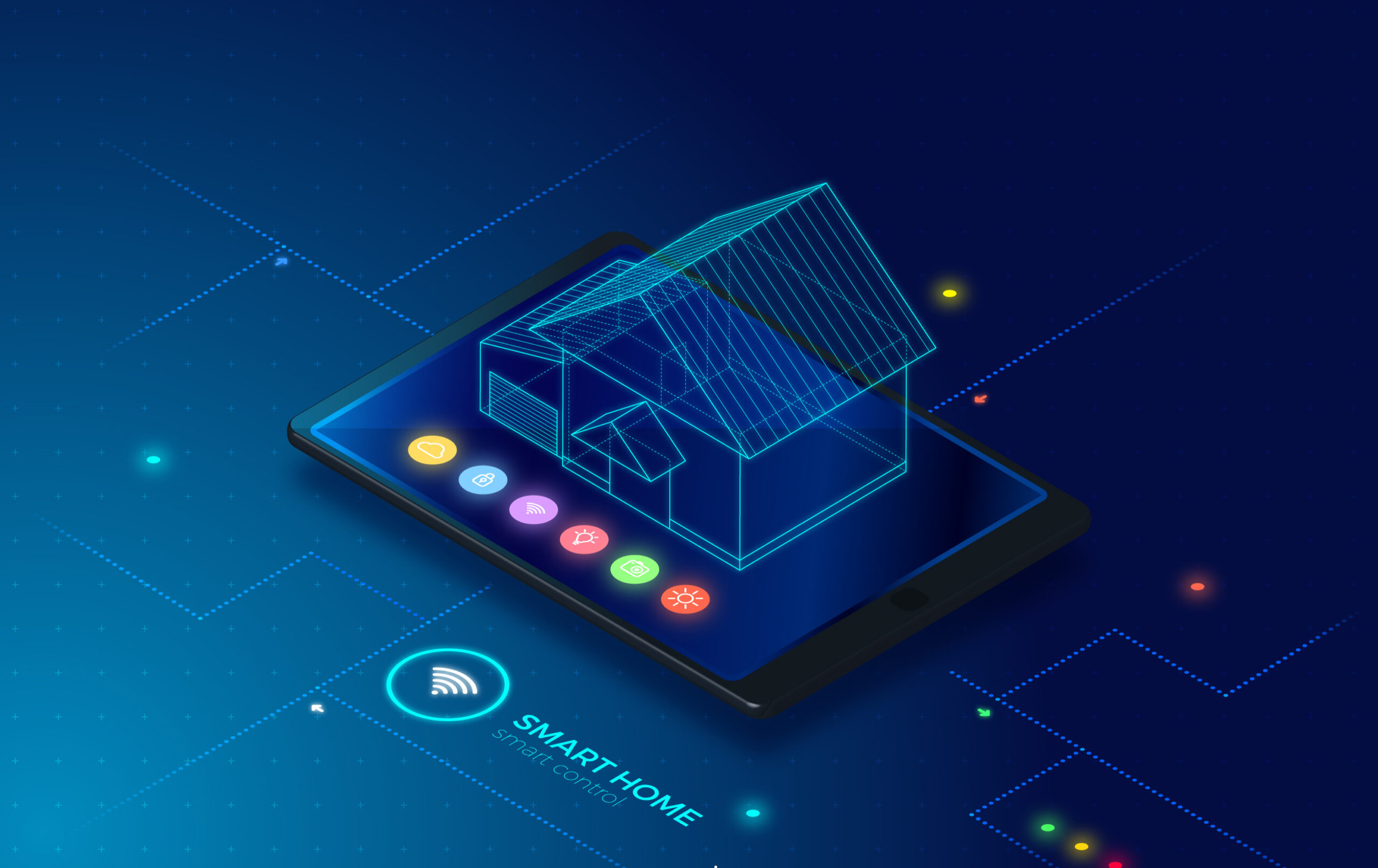Living the Future: How Smart Homes and IoT Are Revolutionizing Modern Living
The idea of living in a smart, connected home seemed like science fiction just a few decades ago. Fast forward to today, and Smart Homes and IoT (Internet of Things) are no longer futuristic concepts but realities shaping the way we live. With smart devices that respond to our voices, thermostats that save energy, and security systems that keep us safe, these technologies are revolutionizing modern living.
In this blog, we’ll dive into the world of Smart Homes and IoT, exploring what they are, their benefits, challenges, and what the future holds.
What Are Smart Homes and IoT?
- Before we explore the impact of these technologies, it’s essential to understand what they mean.
- A smart home is a house equipped with devices that automate and control household systems like lighting, heating, security, and entertainment. These devices are interconnected through the Internet of Things (IoT), which refers to the network of physical objects embedded with sensors, software, and connectivity to exchange data with other systems or devices.
- For example, when you adjust the thermostat from your smartphone or use a voice command to turn off the lights, you’re leveraging IoT technology to create a seamless home experience. Popular IoT-enabled devices include smart speakers, robotic vacuum cleaners, video doorbells, and more.
Key Benefits of Smart Homes and IoT
The rise of Smart Homes and IoT has transformed everyday living in multiple ways. Here are the key benefits:
1. Convenience
- Gone are the days when you had to get up to adjust the thermostat or turn off the lights. With Smart Homes and IoT, you can control almost every aspect of your home remotely via a smartphone app or a voice assistant like Alexa or Google Assistant. Whether you’re at work or on vacation, managing your home has never been easier.
2. Energy Efficiency
- Energy-saving devices like smart thermostats and lights help reduce energy consumption and lower utility bills. For instance, a smart thermostat learns your heating and cooling preferences and adjusts itself automatically, ensuring optimal comfort while saving energy.
3. Enhanced Security
-
- IoT-enabled security devices like smart cameras, video doorbells, and smart locks provide real-time monitoring and alerts, keeping your home safe. You can check who’s at your door or monitor your property from anywhere in the world.
4. Personalization
-
- With the integration of AI and IoT, your home can adapt to your preferences. Smart lighting systems can adjust brightness based on your mood, and smart speakers can recommend music playlists based on your listening habits.
5. Accessibility
-
- For individuals with disabilities or mobility challenges, smart home technology offers life-changing convenience. Voice-controlled devices, automated lighting, and IoT-powered appliances make everyday tasks easier and more accessible.
How Smart Homes Are Changing Modern Living
1. Smart Kitchens
- Imagine a refrigerator that not only keeps your groceries cool but also alerts you when you’re running low on milk or suggests recipes based on the ingredients inside. Smart kitchens are making this possible with IoT-enabled appliances that simplify cooking and meal planning.
2. Health Monitoring at Home
- IoT is extending beyond traditional smart home devices into health monitoring. Wearable devices and smart medical tools can track vital signs, remind users to take medication, and even alert healthcare providers in emergencies. For aging individuals, this can provide peace of mind and greater independence.

3. AI-Driven Automation
- Artificial intelligence is playing a significant role in making homes smarter. AI-powered IoT devices can predict your needs based on usage patterns. For example, a smart lighting system might automatically dim the lights in the evening or turn on your coffee machine when you wake up.
4. Entertainment Redefined
- Smart TVs, streaming devices, and sound systems are transforming home entertainment. With IoT, you can create a synchronized entertainment system that’s tailored to your preferences, whether you’re watching a movie or hosting a party.
Challenges of Smart Homes and IoT
1. Privacy Concerns
- With so many devices collecting and transmitting data, privacy is a significant concern. Cybersecurity risks like hacking and data breaches can expose personal information, making it crucial to invest in secure systems and updates.
2. High Costs
- The initial investment for setting up a smart home can be expensive. While the long-term benefits often outweigh the costs, the price of devices and their installation can be a barrier for some homeowners.
3. Interoperability Issues
- Not all smart devices are compatible with each other, which can lead to frustration when trying to create a seamless system. Efforts like the Matter protocol aim to solve this by standardizing IoT communication.


The Future of Smart Homes and IoT
The rise of Smart Homes and IoT has transformed everyday living in multiple ways. Here are the key benefits:
1. 5G Connectivity
- With the rollout of 5G networks, IoT devices will become faster and more reliable. This will enable real-time data transfer and better performance, especially for video-intensive applications like smart security systems.
2. AI Advancements
- AI is expected to become even more integrated into smart home technology. Homes will not just respond to commands but anticipate your needs. For instance, your home could detect when you’re stressed and adjust the lighting and music to help you relax.
3. Sustainability
- Smart homes will play a crucial role in promoting sustainable living. IoT devices can monitor energy and water usage, helping homeowners reduce waste and live more eco-friendly lifestyles.
4. Integration with Wearable Tech
- The line between wearable devices and smart homes will blur as IoT evolves. For instance, a smartwatch might communicate with your home to adjust the thermostat based on your body temperature.
Conclusion
The era of Smart Homes and IoT is here, and it’s transforming the way we live, work, and interact with our surroundings. From convenience and security to energy efficiency and personalization, the benefits of these technologies are undeniable. However, it’s essential to address challenges like privacy and interoperability to fully realize their potential.
As we look to the future, Smart Homes and IoT promise to become even more intelligent, adaptive, and sustainable, paving the way for a truly connected lifestyle. Are you ready to embrace this revolution? Share your thoughts or your favorite smart devices in the comments below!
Follow us

